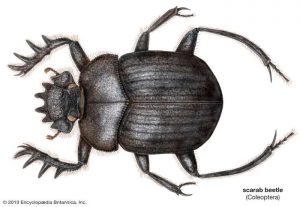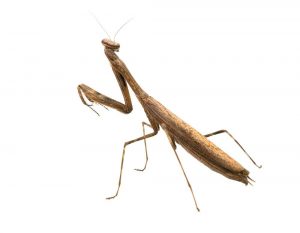 While the horror aspect of the short stories “Mantis,” “Beast,” and “The Metamorphosis” entice the audience to continue reading, it is merely a distraction from the human experience and reactions of the characters. In Kafka’s “The Metamorphosis,” Gregor is transformed into a giant beetle, a monster in the eyes of his family. But it is not on his condition that readers should dwell, but on his father, mother, and sister’s mistreatment of him. Gregor has done everything to ensure the survival of his family by being the money maker of the household when his father’s business failed several years earlier. However, his father never attempted to change this situation. He spends the five years growing “fat and sluggish” until he is too old to be hired for a job. His selfishness is evident when Gregor eavesdrops on the financial discussion between his father, mother, and sister. As Kafka writes, “…that a certain amount of investments, a very small amount it was true, had survived the wreck of their fortunes and had even increased a little…he [Gregor] could really have paid off more of his father’s debts to the chief with this extra money, and so brought much nearer the day on which he could quit his job…” His father is content to let his son stay in a terrible job, give up the majority of his earnings to the family, and never be given the chance to live his own life. Gregor’s mother and sister are no better. His mother is repulsed at the mere sight of him, never once stepping foot into his room or offering him any consolation for his condition. His sister betrays him when she tells her parents they need to get rid of him, having tired of taking care of him. A terrible way to thank her brother, considering he had planned to send her to the Conservatorium to study the violin, a dream she had desired for years.
While the horror aspect of the short stories “Mantis,” “Beast,” and “The Metamorphosis” entice the audience to continue reading, it is merely a distraction from the human experience and reactions of the characters. In Kafka’s “The Metamorphosis,” Gregor is transformed into a giant beetle, a monster in the eyes of his family. But it is not on his condition that readers should dwell, but on his father, mother, and sister’s mistreatment of him. Gregor has done everything to ensure the survival of his family by being the money maker of the household when his father’s business failed several years earlier. However, his father never attempted to change this situation. He spends the five years growing “fat and sluggish” until he is too old to be hired for a job. His selfishness is evident when Gregor eavesdrops on the financial discussion between his father, mother, and sister. As Kafka writes, “…that a certain amount of investments, a very small amount it was true, had survived the wreck of their fortunes and had even increased a little…he [Gregor] could really have paid off more of his father’s debts to the chief with this extra money, and so brought much nearer the day on which he could quit his job…” His father is content to let his son stay in a terrible job, give up the majority of his earnings to the family, and never be given the chance to live his own life. Gregor’s mother and sister are no better. His mother is repulsed at the mere sight of him, never once stepping foot into his room or offering him any consolation for his condition. His sister betrays him when she tells her parents they need to get rid of him, having tired of taking care of him. A terrible way to thank her brother, considering he had planned to send her to the Conservatorium to study the violin, a dream she had desired for years.
 In Julia Armfield’s “Mantis,” a teenage girl is transformed into a praying mantis. But again, the story is not about the transformation, but a teenage girl’s changing body and the thinking that goes along with it. Armfield writes, “…we talk long, indulgent circles of self-hatred. It is Girl Language-a cozy bonding rite. We are all convinced we are too fat, too short, too ugly; competing for each title with Olympic fervor, every grievance made to top what came before.” Puberty is a difficult time for teenage girls, and rarely does positive self-image come at this age. However, the protagonist experiences just this sort of thing when “my skin starts to slip off my bones with a heaviness of sheer relief….I am something else entirely.” While she does change from a teenage girl into a praying mantis, she accepts and loves her new body, something that many young girls and women struggle with on a daily basis.
In Julia Armfield’s “Mantis,” a teenage girl is transformed into a praying mantis. But again, the story is not about the transformation, but a teenage girl’s changing body and the thinking that goes along with it. Armfield writes, “…we talk long, indulgent circles of self-hatred. It is Girl Language-a cozy bonding rite. We are all convinced we are too fat, too short, too ugly; competing for each title with Olympic fervor, every grievance made to top what came before.” Puberty is a difficult time for teenage girls, and rarely does positive self-image come at this age. However, the protagonist experiences just this sort of thing when “my skin starts to slip off my bones with a heaviness of sheer relief….I am something else entirely.” While she does change from a teenage girl into a praying mantis, she accepts and loves her new body, something that many young girls and women struggle with on a daily basis.
Samantha Hunt’s “Beast” is about hidden desires. The protagonist turns into a deer every night because she had a passionate, animalistic tryst with a stranger in a nightclub bathroom. She realizes that there is something she wants more than the domesticity of everyday life with her husband of eleven years. She works up the courage to tell him, but it is not the transformation that causes her to hesitate, but the reason behind it. When she does tell him and transforms that night, to her surprise “A buck, almost twice my size with nearly eight points of antlers, is waiting, his leg raised.” Her husband has the same desires as she and, when he leads her outside their home, realizes that there is an entire community just like them. Both wife and husband join the group, happily embracing their shared desires together.
Your observation about the protagonist of “Mantis” finally being able to love her body by the end is something that didn’t even cross my mind while reading. Looking back, it’s certainly an interesting metaphor for how unhappy we usually are with ourselves at that age, and the story’s ending is such a unique and subversive way of rectifying that unhappiness in our main character.
I completely agree with your observations and was thinking the same thing while reading, especially in “Mantis.” The entire story is about the narrator slowly becoming the insect and losing her skin in the process. We don’t even get to see her in her true form until the very end anyway. The leading up to the transformation was more important to be shown than the transformation itself. Why do you think that is? I’m still asking myself that question. Maybe it’s because the author want us, teenage girls, to possibly relate to her going through the changing process. Puberty, skin problems, boy trouble— these are all very real issues that we deal with (or dealt with).
Until I read your post, I hadn’t thought much of the element of horror in these stories in relation to each other. I agree that all of the stories you mention do have some grotesque and horror-like descriptions when the characters turn into other creatures, but this made me wonder about “Fatso”. The transformation in “Fatso” is portrayed more comically, and it is interesting to note that it is the only story in which the transformation involves the character turning into another human rather than an animal. It is also the only one in which the main character is not the one undergoing the transformation. I think this might be something worth discussing in class.
I agree that the transformation of the characters takes away from the human and it does give the stories a horror feel to them! With the sense of horror, it gives the story the sense of is this now insect going to be one to cause harm or destruction to its path! Also, I agree that the horror effect does make one want to continue reading as they want to see if it actually does do things in its surroundings!
It’s interesting to note that Gregor’s transformation is the only one that ends tragically. A part of me wonders if it is because Gregor has no one that he can share his experience with. In “Beast”, she and her husband both have their own animal form and can share in it. The protagonist of “Mantis” is one in a line of women to go through changes such as hers, and there is a sense of relief to her transformation. Gregor, in contrast, is completely alone in his transformation. Even in a more basic sense, the protagonist of “Mantis” can relate in a sense to the other girls around her. In “Beast”, the husband simply asks the wife to show him her transformation before we know that he transforms too. Even with the sense of otherness that these characters have, there is a sort of kinship found in it too that your post made me think of.
It is interesting that you note that it is not the transformation that should be at the forefront if the reader’s interest but rather the reasons beyond that. I say interesting because what catches the attention of the reader is the disturbing description of the transformation into the animals which at most times pushes the reasons for why to a secondary acknowledgement. It is easy to allow yourself to be distracted by the supernatural in the text, but truth be told there wouldn’t be a story if it was just a transformation without any other context.